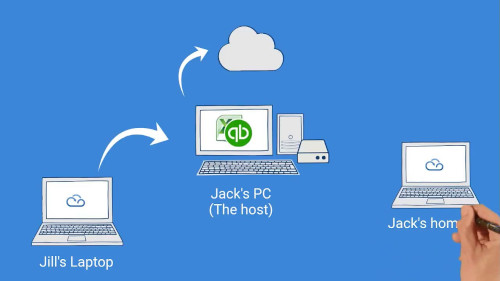In small and medium businesses (SMEs), remote work is fast becoming the norm. More and more SMEs are adopting flexible, remote working styles as digital transformation continues to reshape all industries. Work from home isn’t the only benefit of remote work for employees. Other benefits include reduced office space and parking costs, as well as improved employee satisfaction.
In 2023, you should understand how virtual workers can impact your organisation’s productivity and culture. This is if you plan to adopt remote work for your small business. As remote work adoption among SMEs remains uncertain, this article examines the challenges associated with implementing it. This will allow you to optimize processes for the future of remote work.
For SMEs, remote work has a number of benefits
Flexible working hours, reduced stress, improved focus, a better quality of life, lower costs, reduced absenteeism, improved employee retention and higher productivity are some of the top benefits of remote work. Remote work has many benefits for your organization, including:
Satisfaction among employees increased
Remote work has become increasingly popular as the freelance economy has grown. Employees have a greater sense of security and flexibility when working remotely.
In large cities, commuting can be stressful for employees, so remote work can reduce this stress. Various health issues have been linked to long commutes, including depression, anxiety, and even a higher risk of death due to heart disease or an accident.
Productivity is improved
Often, when people work in an office, they are interrupted by impromptu meetings, colleagues dropping by and other nearby workers’ noise. In contrast, working remotely gives you more control over your environment and fewer distractions.
Cost-savings
Especially in major cities, office spaces are notoriously expensive. Allowing your employees to work remotely will save you on rent and utilities.
Is remote work a barrier for SMEs?
Why don’t more SMEs utilize remote work if it’s such a great idea? Consider the following potential issues:
The communication process
The importance of communication when employees work remotely cannot be overstated. Different time zones can create additional challenges for remote workers. The use of digital communication tools such as video conferencing, instant messaging, video calls, and email is imperative for remote communication.
Creating a remote work environment within your organization requires communication as well. Decide which roles should be performed in the office and which will be allowed to work remotely. Your organization may benefit from creating a remote-only role when setting up remote work.
Insights into culture
You shift your organization’s culture when you implement remote work. Many remote workers feel less accountable to the organization and have more autonomy. Your office workers and managers may feel they have fewer opportunities to contribute and grow within the company due to this. Setting up safeguards against the negative effects of the change is essential.
Working remotely presents organizational challenges
There are many advantages to remote work, but it also poses several challenges for organizations and managers.
The accountability system
Holding remote workers accountable is a common organizational challenge. It’s possible for managers to see if employees are showing up, working, or having trouble with a task when they’re in the office. In order to track and evaluate remote workers’ work, managers may have to spend more time and resources.
Remote worker location management
Remote workers may work in different places, which can present challenges if your organisation uses tools such as online collaboration and project management software. Remote workers may also have issues accessing the technology they need to do their jobs.
Skills shortages for remote workers
Skills gaps among remote workers are another challenge of implementing remote work. A person hired for an office-based role has the opportunity to be observed in person, and your hiring team can evaluate whether the candidate has the skills and experience needed. Hiring remote workers involves more screening techniques, like screening for expertise based on job titles or work histories.
Some people may find remote work a great opportunity, while others may be better suited to roles based in the office where their skills can be fully utilized. Recruiting remote workers may lead to a skills gap. Your remote workers may be underutilizing their skills, or they may not possess the skills you require.
The challenges of managing remote workers in an organization
When implemented on a large scale, remote work can have some potential drawbacks and challenges. When implementing remote work in your organization, you should be aware of these things:
The art of managing expectations
Often, when you work remotely, you are more accountable to yourself than to your office manager. It can be a good thing, but it can also result in neglecting other aspects of your job or working fewer hours than you should. Working remotely requires remote workers to set boundaries within their schedules to stay on top of their responsibilities.
Workers’ resentment
A lack of safeguards can lead to resentment from office workers if you implement remote work. Work from home may provide additional benefits for remote workers, such as increased autonomy.
What are the risks associated with remote work?
Working remotely has many benefits for your organization, but it also has its challenges. Understanding the risks and benefits of remote work is essential before implementing a policy. It is important to be honest about how implementing remote work will affect the culture and business processes of your organization.
Incorporating remote work into your business is not something you should do simply because everyone else is doing it. Your organization should do it when it makes sense.





